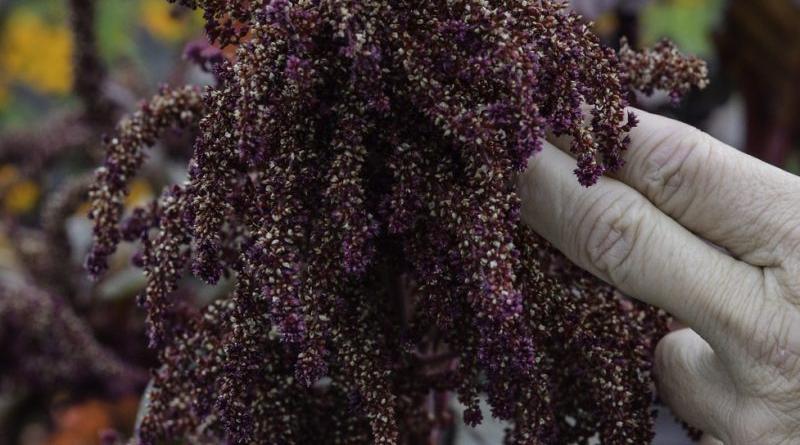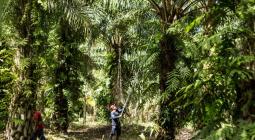Today’s diets are eating away at our future food supplies, but we can change this.

Thousands of overlooked yet beneficial crop species are threatened unless we learn to conserve, farm and consume them, writes Juan Lucas Restrepo.
In addition to the rhinoceroses, elephants and frogs that are often presented as the poster children of the extinction crisis, our crops and their wild non-domesticated relatives are also threatened. And crop biodiversity arguably has a far greater and more immediate effect on us.
More than 6,000 edible plant species exist, and yet fewer than 200 are used today to feed the world. Of these, only three crops – maize, wheat and rice – supply around 60% of humanity’s plant-based calories. And within these three crops, the genetic diversity arriving in our platters is also shrinking.
This poor use of agricultural biodiversity, or “agrobiodiversity”, is bad for farming, as it makes harvests more vulnerable to bad weather as well as to pests and diseases. It is also bad for human health since less varied diets are less nutritious and are more prone to making people less healthy.
And it is also bad for the environment, as it impacts soil and water quality and reduces the number of pollinators, on which as much as $577 billion of annual global food production is reliant.
Boosting the use of agrobiodiversity could help us all. Under-utilised plants like some millets and sorghums are more nutritious than the grains which dominate our plates, and they use less water. Growing crops that can tolerate new pests and diseases and perform better under climate variability will feed the world with lower risks and lower “true costs”.
Supporting a mosaic of land uses across a landscape and across agroforestry systems can improve water and soil quality, reduce pests and stem land degradation.
So, agrobiodiversity can help humanity by lowering trade-offs between improving nutrition, health, farmers’ incomes and the environment. However, every day, the crops that could help improve diets and build resilient and sustainable food systems are being lost.
To help raise awareness and to promote positive change, we have just launched the Agrobiodiversity Index across a sample of ten countries that will serve as prototypes. The Index is a tool that allows governments, businesses, and investors to see how diverse their food systems are and understand if they are doing enough to conserve and use agrobiodiversity in a sustainable manner.
With its information, the Index provides advise to decision-makers on how they can act to improve nutrition, sustainability, and resilience across the food system. The Index also tracks how effective actions are in boosting agrobiodiversity, indicating where public and private money should be spent.
Smart investments in promoting agrobiodiversity can have high payoffs. Globally, more than two billion people suffer from undernutrition, costing the world USD $3.5 trillion annually.
This is disproportionately shouldered by individuals and families in developing countries. Improving agrobiodiversity is one of the cheapest and most straightforward measures to cut this cost down while promoting economic growth.
Promoting agrobiodiversity requires nudges to motivate people to eat and therefore produce new foods. On the consumer’s side, it requires to create and popularise new dishes as well as promoting changes in eating habits in schools.
For farmers, it requires research and extension to help farmers increase varietal and species diversity on their farms. For businesses, it is about embracing a more diversified value chain that provides more economic opportunities as markets expand.
Many of these forgotten foods are grown locally already. Some of the best ways to improve agrobiodiversity are to encourage people to consume indigenous crops, forest foods and animal breeds produced close to home.
Take amaranth, an iron-rich leafy vegetable which also produces a gluten-free, high-protein grain. While many amaranth species are demonised as weeds, some have a long history as being an extremely nutritious crop that is easy to grow.
We must work towards providing healthy food to 10 billion people by 2050. Increasing agrobiodiversity may be one of the most effective ways to achieve this while protecting Earth, our home. Let’s preserve our agricultural biodiversity by using and consuming more of it.
Juan Lucas Restrepo is the director general of Bioversity International.
12 June 2019





